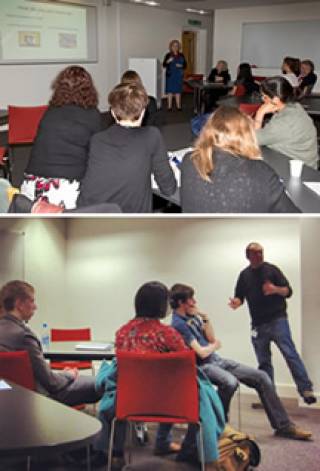
In August-September 2012 an area of the Cruciform Library was converted to create a pilot area for testing a variety of prototype group and project work furniture and configurations. The purpose of the pilot was to help inform the architects' final designs for the forthcoming Cruciform Hub and library users were invited to provide feedback. Project work space had been identified as a requirement in the earlier Cruciform Library User Survey (November 2011) as were provision of a water fountain and space to consume food and drink, which were also included in the Pilot Room. The adjacent Annex room was designated a Quiet Study area and views on this space were also sought.
The Pilot Room survey was open from 1 October - 21 December 2012 and was completed by 204 people, of whom the majority were UCL medical students. Responses included over 400 free-text comments that highlighted 5 broad priorities:
- To make best use of space when this is at a premium
- The importance of quiet, individual spaces for study and revision
- Group study areas should be for group work and separate from quiet study
- Appropriate environmental conditions including heating, air quality and light
- The need for greater provision of power & data, PCs, printers and improved mobile reception
Summary of main findings
Demographic data
194 (94%) respondents were medical students. Responses were also received from 6 postgraduate students, 1 member of academic staff and 1 member of NHS staff (total 4%).
Library usage
88 (44%) respondents visited the Library daily and 94 (47%) visited at least once or twice a week. 16 (8%) respondents visited the Library monthly or less frequently.
Feedback on specific areas
Respondents were asked to rank on a scale of 1-4 whether
- I can get a space when I want to use this facility
- I find the space either does not work for what I want to do or allows me to do exactly what I need
1. Tables and benches
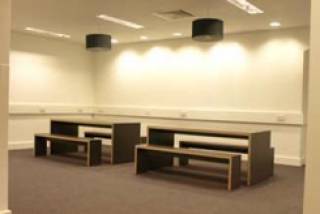
130 respondents ranked availability of this area as either 2 or 3; only 11 can get a space whenever they want to and 8 never can. For 37 respondents access to this area was 'not applicable'.
For 26 respondents this area allows them to do exactly what they need, for 33 it doesn't. 101 ranked this aspect 2 or 3.
Although popular with some, the free text comments about this area identified a number of concerns:
- Space seems to be wasted - the density of study places could be improved
- Benches are uncomfortable and individual seats are preferred
- Additional facilities are required, eg power/data and whiteboards
- The area is better suited to short group/social activity than for studying
2. Group Study Pod - screen facing in/users facing out
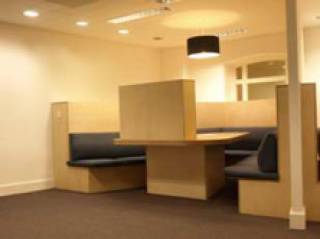
113 respondents ranked availability of this area as either 2 or 3; only 8 can get a space whenever they want to and 22 never can. For 35 respondents access to this area was 'not applicable'.
For 51 respondents this area allows them to do exactly what they need, for 18 it doesn't. 75 ranked this aspect 2 or 3.
Free text comments confirmed this as a popular area for group work, although there were also some concerns:
- A booking system is necessary as the pod was not always available when required
- The prototype design can be awkward to access and sit at
- Unsuitable for individual study and groups should take preference
- Not suitable for some types of group work eg OSCE practice
3. Group Study Pod - screen facing out/users facing in
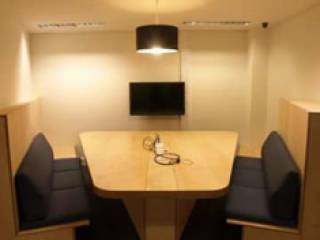
101 respondents ranked availability of this area as either 2 or 3; only 7 can get a space whenever they want to and 23 never can. For 40 respondents access to this area was 'not applicable'.
For 37 respondents this area allows them to do exactly what they need, for 17 it doesn't. 78 ranked this aspect 2 or 3.
Responses about this area were similar to those for the previous pod in the opposite formation; some preferred this pod because it is more open, others preferred the more enclosed pod with a private view of the screen.
4. Seminar and Project Work space
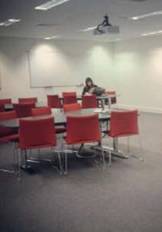
97 respondents ranked availability of this area as either 2 or 3; 32 can get a space whenever they want to and 9 never can. For 31 respondents access to this area was 'not applicable'.
For 61 respondents this area allows them to do exactly what they need, for 12 it doesn't. 67 ranked this aspect 2 or 3.
This was the most popular area in the Pilot Room with the whiteboards a particularly welcome feature. Free text comments highlighted a number of things that could be improved:
- Clarify the purpose of the area as teaching or study space
- Whiteboards need to be closer to the tables
- Add more tables and chairs with power/data supplied to each one
- Review design of tables and chairs to increase occupancy
5. Laptop shelf
76 respondents ranked availability of this area as either 2 or 3; 18 can get a space whenever they want to and 14 never can. For 57 respondents access to this area was 'not applicable'.
For 22 respondents this area allows them to do exactly what they need, for 30 it doesn't. 63 ranked this aspect 2 or 3.
Free-text comments highlighted concerns about the position of the shelf (too high) and stools (too low), as well as proximity to circulation routes that made this a less popular area than it might potentially be.
6. Quiet Study Annex
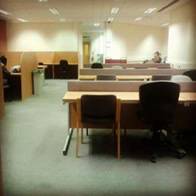
57 respondents ranked availability of this area as either 2 or 3; 69 can get a space whenever they want to and only 1 never can. For 36 respondents access to this area was 'not applicable'.
For 83 respondents this area allows them to do exactly what they need, for 5 it doesn't. 39 ranked this aspect 2 or 3.
The changes made to the Annex during Summer 2012 were the removal of most of the shelving, rearrangement of desks, and the addition of some task lighting. Responses and free-text comments endorsed the continuing requirement for both quiet and silent study spaces expressed in the earlier (2011) survey; the casual seating area is also appreciated.
Free-text comments suggested areas for improvement:
- Individual study carrels are very popular but need light and power
- Add power and data to all desks
- Increase the temperature as it can be too cold for sedentary work
- Quiet study designation needs to be reinforced with clear signage and regular supervision by library staff
Feedback on food and drink
Cold snacks and covered hot and cold drinks have been permitted in the Pilot Room. The survey asked 'Do you want food and drink to be allowed elsewhere in the Library?'. 119 (73%) of respondents said Yes; 45 (27%) said No. Better functioning water fountain(s) are needed and other refreshment facilities would be desirable.
Further development of the Cruciform Hub plans
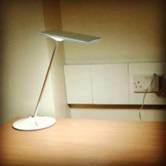
The survey results are being shared with the architects, Burwell Deakins, and Library Services will continue to work with them and UCL Estates to incorporate as much feedback as possible into the final designs. In direct response to user feedback the designs have already been amended so that the seminar and project work space will accommodate more people and comfortable chairs for laptop usage will be provided in the new Hub. Building work is due to commence from June 2013 and complete in January 2014.
Thank you to all who responded to the survey. We are also grateful to the students who participated in two 'Meet the architects' sessions on 27 and 30 November 2012 and to those who have provided individual feedback about the Pilot Room.
A survey was conducted in November 2011 which drew over 1,000 responses and a report on the survey findings is available here.
 Close
Close

